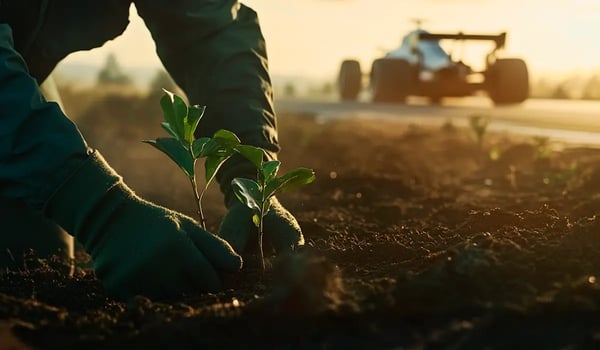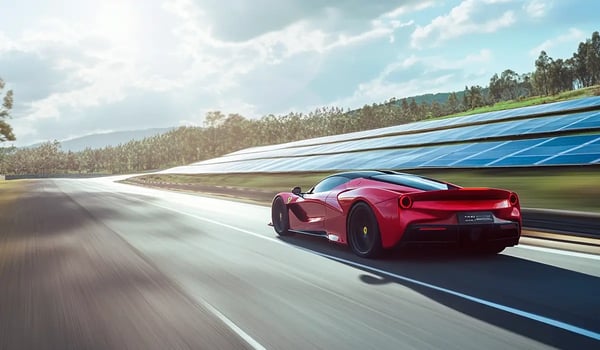Mercedes-AMG Petronas Formula One (F1) team is deepening its commitment to sustainability with a...
Lego strengthens sustainability push with $2.6m carbon removal investment
Lego is ramping up its climate commitments with a $2.63 million investment in carbon removal credits through partnerships with ClimeFi and Climate Impact Partners (CIP). The deal covers three key carbon removal strategies: enhanced rock weathering, reforestation, and biochar production. Additionally, Lego’s parent company, Kirkbi, has pledged an extra $690,000 to similar initiatives, all set for completion by 2026.
 A close-up of a small LEGO forester figurine among young tree seedlings in a woodland setting. AI generated picture.
A close-up of a small LEGO forester figurine among young tree seedlings in a woodland setting. AI generated picture.
‘Innovative, high-quality carbon removal projects and emerging technologies have the potential to play an important role in supporting a more sustainable future, while reforestation has the potential to support improved biodiversity,’ said Annette Stube, chief sustainability officer at the Lego Group.
This move underscores the increasing role of corporate players in carbon removal, even amid shifting environmental policies. It follows another major transaction in the space—Microsoft’s recent purchase of 7 million afforestation carbon units.
Lego’s latest investment builds on its ongoing sustainability efforts. In March 2024, the company secured carbon credits from Climeworks, a Swiss direct air capture (DAC) firm. While the specific volume of credits from these new deals remains undisclosed, CIP has confirmed that one of the initiatives—the Mississippi Valley Reforestation project—aims to restore 404,000 hectares of woodland along the Mississippi-Arkansas border, with a projected carbon removal capacity of 500,000 tonnes per year.
Meanwhile, ClimeFi has yet to reveal details of the other three projects but confirmed that its biochar initiatives will generate credits by converting residual biomass in pyrolysis facilities, while its enhanced rock weathering project will permanently sequester CO2 in the ocean. Lego will also receive ongoing insights into its carbon removal portfolio as part of the agreement.
While expanding its global footprint, Lego has pledged to cut its emissions by 37% by 2032 (compared to 2019 levels) and achieve net zero across all Scope 1, 2, and 3 emissions by 2050.
According to its latest sustainability report, the company emitted 119,089 tonnes of CO2 equivalent in 2023—an 8.8% drop from the previous year but still 7.6% above its 2019 baseline. The majority of emissions stem from supply chain activities, particularly plastic production and logistics.
Lego has not disclosed the full scope of its strategy to meet these ambitious targets but employs a ‘shadow carbon pricing’ model to guide investment decisions. Its environmental spending is on the rise, with plans to double annual investments in sustainability initiatives by 2025.
As demand for carbon credits continues to grow, businesses are leveraging innovative solutions to stay ahead of evolving sustainability expectations. Explore how carbon investments can help drive real impact today.






